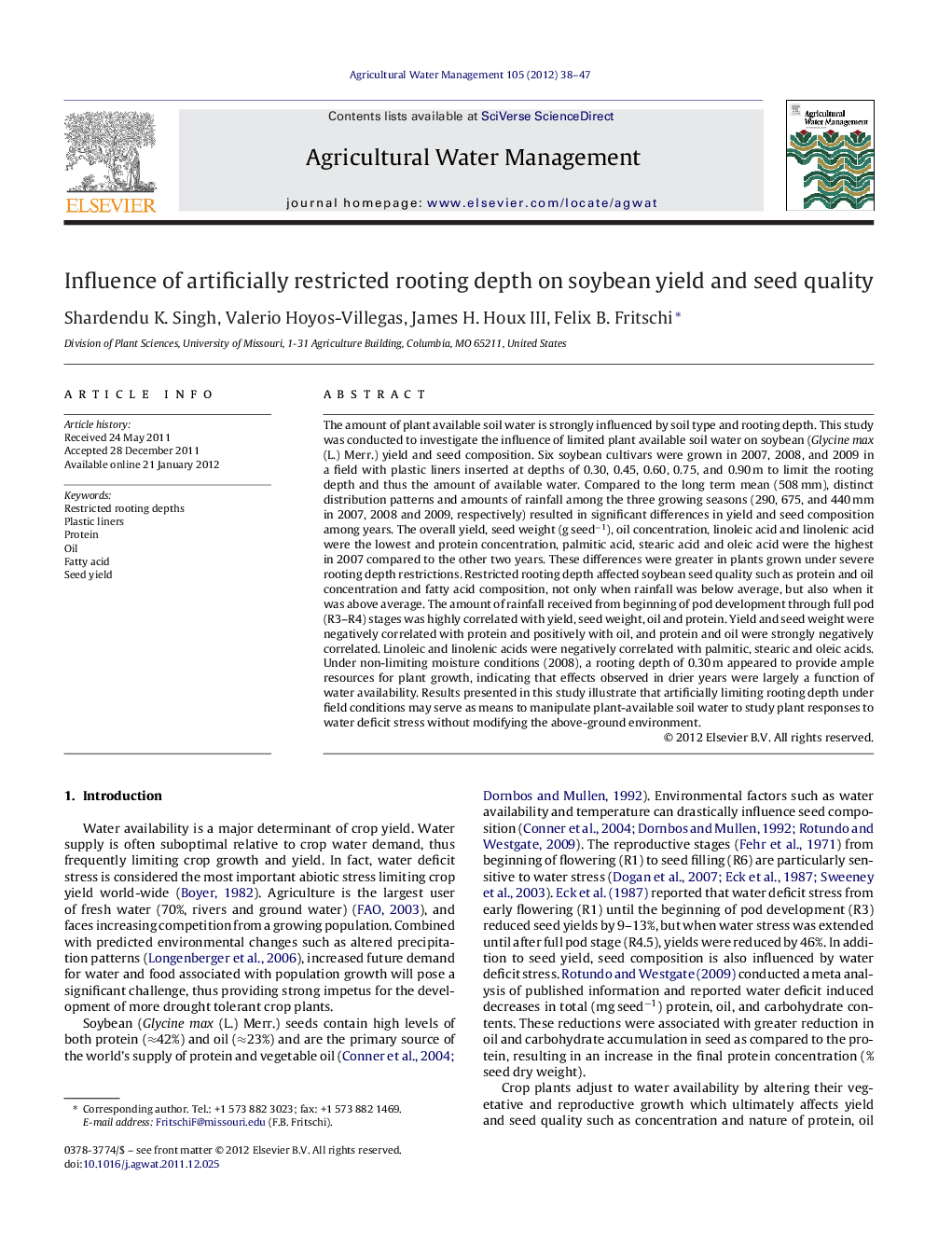| کد مقاله | کد نشریه | سال انتشار | مقاله انگلیسی | نسخه تمام متن |
|---|---|---|---|---|
| 4479159 | 1622974 | 2012 | 10 صفحه PDF | دانلود رایگان |

The amount of plant available soil water is strongly influenced by soil type and rooting depth. This study was conducted to investigate the influence of limited plant available soil water on soybean (Glycine max (L.) Merr.) yield and seed composition. Six soybean cultivars were grown in 2007, 2008, and 2009 in a field with plastic liners inserted at depths of 0.30, 0.45, 0.60, 0.75, and 0.90 m to limit the rooting depth and thus the amount of available water. Compared to the long term mean (508 mm), distinct distribution patterns and amounts of rainfall among the three growing seasons (290, 675, and 440 mm in 2007, 2008 and 2009, respectively) resulted in significant differences in yield and seed composition among years. The overall yield, seed weight (g seed−1), oil concentration, linoleic acid and linolenic acid were the lowest and protein concentration, palmitic acid, stearic acid and oleic acid were the highest in 2007 compared to the other two years. These differences were greater in plants grown under severe rooting depth restrictions. Restricted rooting depth affected soybean seed quality such as protein and oil concentration and fatty acid composition, not only when rainfall was below average, but also when it was above average. The amount of rainfall received from beginning of pod development through full pod (R3–R4) stages was highly correlated with yield, seed weight, oil and protein. Yield and seed weight were negatively correlated with protein and positively with oil, and protein and oil were strongly negatively correlated. Linoleic and linolenic acids were negatively correlated with palmitic, stearic and oleic acids. Under non-limiting moisture conditions (2008), a rooting depth of 0.30 m appeared to provide ample resources for plant growth, indicating that effects observed in drier years were largely a function of water availability. Results presented in this study illustrate that artificially limiting rooting depth under field conditions may serve as means to manipulate plant-available soil water to study plant responses to water deficit stress without modifying the above-ground environment.
► Utility of restricted rooting depths system was tested for water deficit study in soybean.
► Rooting depth influenced seed quality regardless of amount of seasonal rainfall.
► This system creates water deficit even in regions with significant rainfall.
► It provides an alternative way to manipulate soil water for water deficit study in crops.
Journal: Agricultural Water Management - Volume 105, March 2012, Pages 38–47